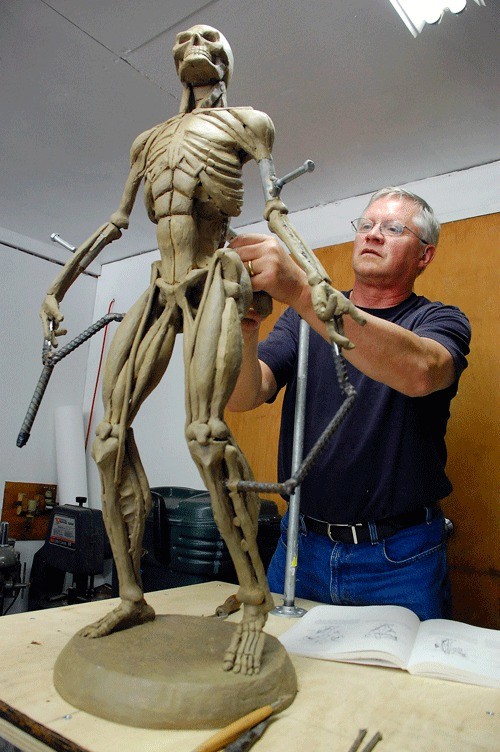A grass roots effort has begun to honor Native Americans and Oak Harbor’s newly rediscovered pre-contact heritage.
Amateur historian and author Peggy Darst Townsdin has teamed up with local artist Wayne Lewis and together they are proposing a bronze statue be cast for SE Pioneer Way. They are scheduled to make a presentation before the city’s arts commission on Monday.
The Aug. 8 meeting begins at 6 p.m. and will be held at City Hall, located at 865 SE Barrington Drive in Oak Harbor.
“It’s just going to be a fantastic tribute to the tribes and a good start for the city to begin recognizing its historical roots,” Darst Townsdin said.
Darst Townsdin has a personal interest in Oak Harbor’s history. Her great-great grandfather was Captain Edward Barrington, one of the city’s earliest pioneers. He owned property and operated a business on land located on what is now Pioneer Way.
Darst Townsdin said she has for a long time wanted to honor the city’s pioneering past with public art, possibly of her own ancestor, in the downtown area. But with the discovery of Native American remains on SE Pioneer Way this past June, her hopes went into overdrive.
She began voicing her hopes on online blogs and it wasn’t long before her vision grabbed the attention of city leaders. Within a few short weeks, she was appointed to the Oak Harbor Arts Commission.
At the same time, she was working with Lewis on an idea he came up with for a bronze sculpture of a Native American man holding two salmon.
“The image just came to me and I jumped on it,” he said.
This would not be the first piece the Oak Harbor artist has created for the city. He is the architect of “Dutch Boy,” the bronze statue of a young man sweeping that decorates the lagoon at Windjammer Park.
Lewis is so excited about the piece that he’s already begun putting it together. But it still has a long way to go. Due to the figure being dressed only in a loin cloth, it’s especially important that its limbs and torso look anatomically correct.
With an anatomy book close at hand, Lewis has spent weeks creating the internal skeleton and muscle groups. At this stage, the piece looks more like something you would find in a high school science classroom but it won’t look like that forever.
Once cast, Lewis hopes the piece will cause people to stop and reflect on Oak Harbor’s history, a history that started long before the arrival of the city’s early pioneers in the 1850s. At the very least, he hopes it will make Oak Harbor a little nicer.
“Any piece of art that goes into the city should make it a better place to live,” he said.
Lewis is doing all the work, estimated about $12,000, for free. Based on a quote from an Oregon foundry, he said the casting will run about $6,000. That’s one expense that will have to be covered by another source.
There is a lot that needs to happen before the piece can ever be placed downtown. Before the statue proposal goes to the city council for final approval, it will have to be reviewed by the arts commission and likely undergo some type of public vetting.
The future of the project will also hinge greatly on tribal input. It’s expected that they will be asked to approve the final image, though when and how that would occur is still unclear.
Oak Harbor Mayor Jim Slowik said he views the discovery of Native American remains on SE Pioneer Way as a “paradigm” shift for not just the city but for all of Whidbey Island. The city’s current focus is to work with the tribes and get the downtown road project done, but Slowik is envisioning a future of tribal partnership and public education.
“I see it beyond infrastructure,” he said.
While that could include a range of possibilities, from museums to educational symposiums, all of it will require careful consideration and a free and meaningful dialogue with the tribes. That includes public art.
“If we really want a cultural relationship, we’ll have to listen to them,” Slowik said.
While there is a call for honoring our newfound past, Slowik said he isn’t ready to endorse the sculpture and that its fate is out of his hands. It’s in the hands of the arts commission, the public, the tribes and the city council, he said.



